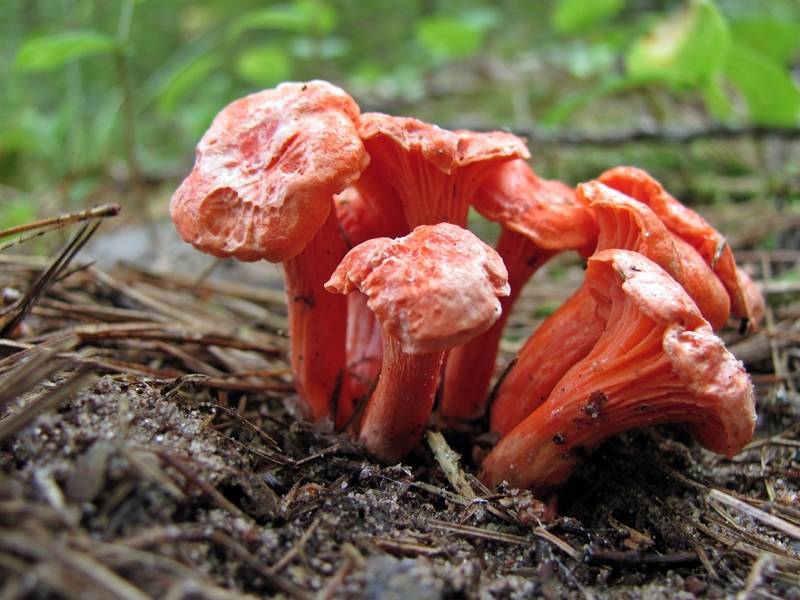|
Cantharellus Subg. Magni
''Magni'' is a subgenus of fungi in the genus Cantharellus ''Cantharellus'' is a genus of mushrooms, commonly known as chanterelles (), a name which can also refer to the type species, '' Cantharellus cibarius''. They are mycorrhizal fungi, meaning they form symbiotic associations with plants. Ch .... Species in this genus is found in China. Taxonomy The subgenus was established in 2021 with '' Cantharellus magnus'' as the type species, which the subgenus is named after. Two other species ''C. laevigatus'' and ''C. bellus'' were described in 2023. Species Accepted species: References * Eukaryote subgenera {{Agaricomycetes-stub ... [...More Info...] [...Related Items...] OR: [Wikipedia] [Google] [Baidu] |
Cantharellus Magnus
''Cantharellus'' is a genus of mushrooms, commonly known as chanterelles (), a name which can also refer to the type species, ''Cantharellus cibarius''. They are mycorrhizal fungi, meaning they form symbiotic associations with plants. Chanterelles may resemble a number of other species, some of which are poisonous. The name comes from the Greek word ''kantharos'' ('tankard, cup'). Chanterelles are one of the most recognized and harvested groups of edible mushrooms. Description Mushrooms in the genus are generally shaped like cups or trumpets. The hue is mostly yellow, with the gills sometimes pinkish. Similar species The false chanterelle (''Hygrophoropsis aurantiaca'') has finer, more orange gills and a darker cap. It is sometimes regarded as poisonous. The very similar jack-o'-lantern mushroom (''Omphalotus olearius'') and its sister species (''Omphalotus olivascens'') are very poisonous, though not lethal. They have true gills (unlike chanterelles) which are ... [...More Info...] [...Related Items...] OR: [Wikipedia] [Google] [Baidu] |
Subgenus
In biology, a subgenus ( subgenera) is a taxonomic rank directly below genus. In the International Code of Zoological Nomenclature, a subgeneric name can be used independently or included in a species name, in parentheses, placed between the generic name and the specific epithet: e.g. the tiger cowry of the Indo-Pacific, ''Cypraea'' (''Cypraea'') ''tigris'' Linnaeus, which belongs to the subgenus ''Cypraea'' of the genus ''Cypraea''. However, it is not mandatory, or even customary, when giving the name of a species, to include the subgeneric name. In the International Code of Nomenclature for algae, fungi, and plants The ''International Code of Nomenclature for algae, fungi, and plants'' (ICN or ICNafp) is the set of rules and recommendations dealing with the formal botanical names that are given to plants, fungi and a few other groups of organisms, all tho ... (ICNafp), the subgenus is one of the possible subdivisions of a genus. There is no limit to the number of divisio ... [...More Info...] [...Related Items...] OR: [Wikipedia] [Google] [Baidu] |
Fungi
A fungus (: fungi , , , or ; or funguses) is any member of the group of eukaryotic organisms that includes microorganisms such as yeasts and mold (fungus), molds, as well as the more familiar mushrooms. These organisms are classified as one of the kingdom (biology)#Six kingdoms (1998), traditional eukaryotic kingdoms, along with Animalia, Plantae, and either Protista or Protozoa and Chromista. A characteristic that places fungi in a different kingdom from plants, bacteria, and some protists is chitin in their cell walls. Fungi, like animals, are heterotrophs; they acquire their food by absorbing dissolved molecules, typically by secreting digestive enzymes into their environment. Fungi do not photosynthesize. Growth is their means of motility, mobility, except for spores (a few of which are flagellated), which may travel through the air or water. Fungi are the principal decomposers in ecological systems. These and other differences place fungi in a single group of related o ... [...More Info...] [...Related Items...] OR: [Wikipedia] [Google] [Baidu] |
Cantharellus
''Cantharellus'' is a genus of mushrooms, commonly known as chanterelles (), a name which can also refer to the type species, '' Cantharellus cibarius''. They are mycorrhizal fungi, meaning they form symbiotic associations with plants. Chanterelles may resemble a number of other species, some of which are poisonous. The name comes from the Greek word '' kantharos'' ('tankard, cup'). Chanterelles are one of the most recognized and harvested groups of edible mushrooms. Description Mushrooms in the genus are generally shaped like cups or trumpets. The hue is mostly yellow, with the gills sometimes pinkish. Similar species The false chanterelle ('' Hygrophoropsis aurantiaca'') has finer, more orange gills and a darker cap. It is sometimes regarded as poisonous. The very similar jack-o'-lantern mushroom ('' Omphalotus olearius'') and its sister species ('' Omphalotus olivascens'') are very poisonous, though not lethal. They have true gills (unlike chanterelles) wh ... [...More Info...] [...Related Items...] OR: [Wikipedia] [Google] [Baidu] |
Cantharellus Bellus
''Cantharellus'' is a genus of mushrooms, commonly known as chanterelles (), Chanterelle, a name which can also refer to the type species, ''Cantharellus cibarius''. They are mycorrhizal fungi, meaning they form symbiotic associations with plants. Chanterelles may resemble a number of other species, some of which are Mushroom poisoning, poisonous. The name comes from the Greek language, Greek word ''kantharos'' ('tankard, cup'). Chanterelles are one of the most recognized and harvested groups of edible mushrooms. Description Mushrooms in the genus are generally shaped like cups or trumpets. The hue is mostly yellow, with the Lamella (mycology), gills sometimes pinkish. Similar species The false chanterelle (''Hygrophoropsis aurantiaca'') has finer, more orange gills and a darker cap. It is sometimes regarded as Mushroom poisoning, poisonous. The very similar jack-o'-lantern mushroom (''Omphalotus olearius'') and its sister species (''Omphalotus olivascens'') are ... [...More Info...] [...Related Items...] OR: [Wikipedia] [Google] [Baidu] |




